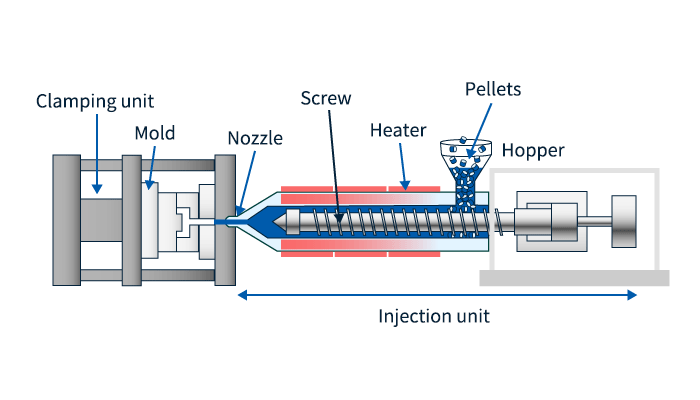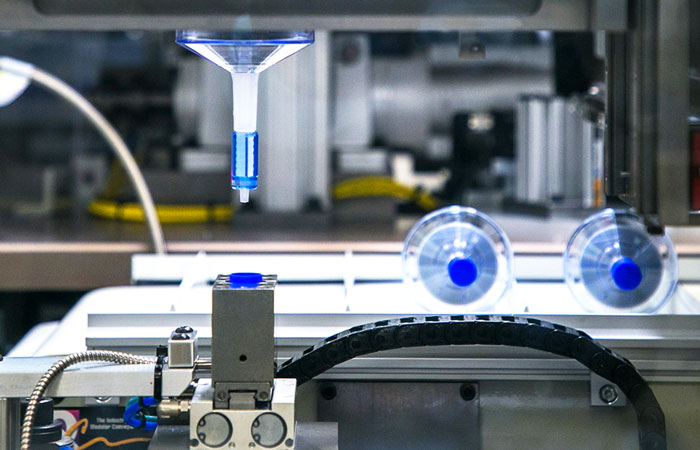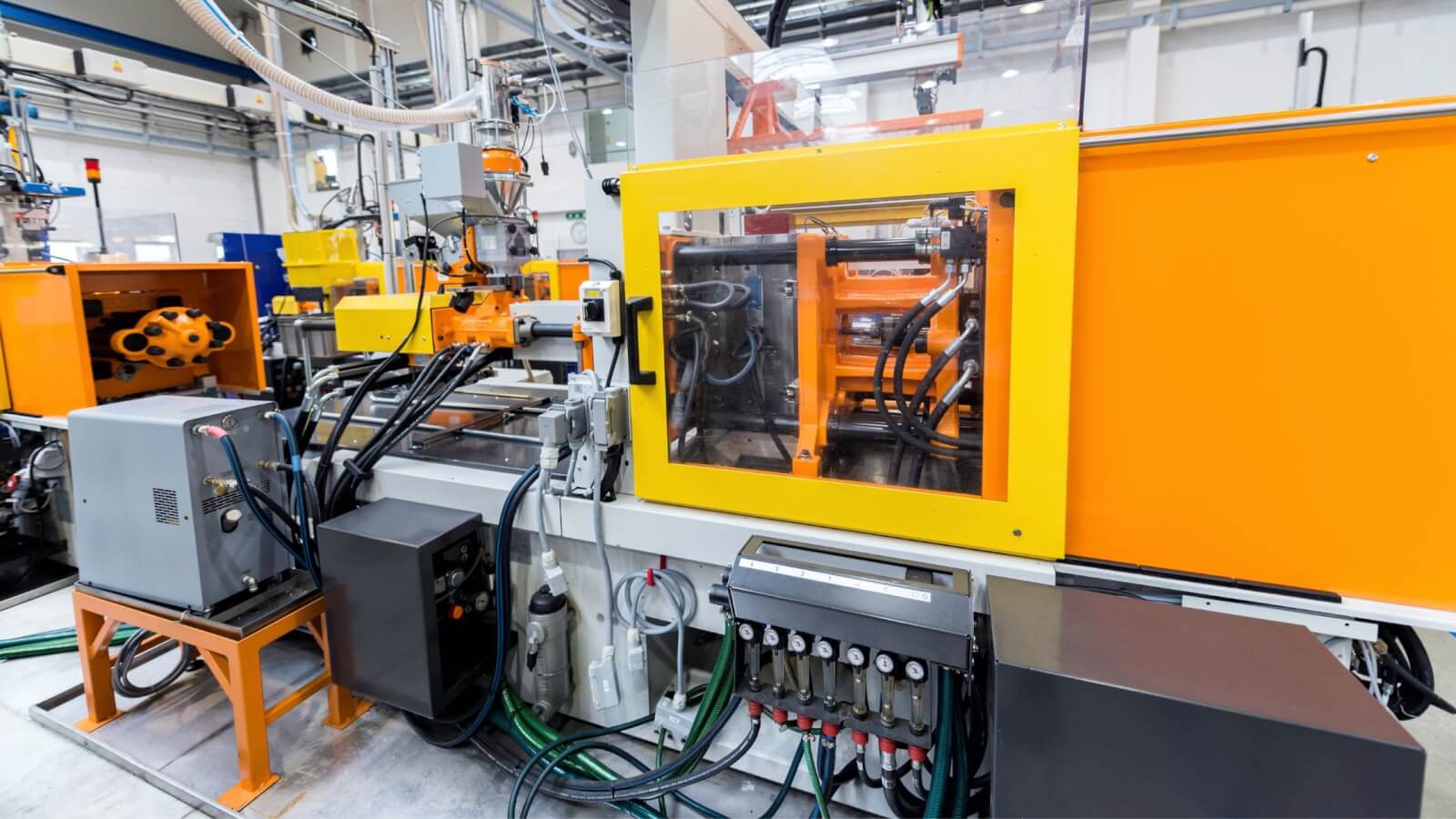Comprehending the Basics of Plastic Injection Molding Procedures
Plastic injection molding serves as a keystone of modern-day manufacturing, supplying a methodical technique to creating complicated components with accuracy. Discovering these necessary components might disclose how even minor changes can lead to significant improvements in manufacturing outcomes, increasing questions regarding the capacity for innovation in this well-known procedure.
What Is Plastic Injection Molding?
Plastic injection molding is an extensively used production process that transforms thermosetting and polycarbonate products right into precise and intricate forms. This strategy is favored for its capacity to generate high volumes of identical get rid of phenomenal precision, making it an indispensable technique in different industries, including automobile, customer items, and medical tools.
The process entails melting the picked plastic material and infusing it into a mold under high pressure. The mold, developed to the specs of the wanted part, allows the molten plastic to take form as it solidifies and cools down. As soon as the product has actually set, the mold is opened up, and the finished component is expelled.
Plastic injection molding uses a number of advantages, including minimized waste, uniformity in manufacturing, and the capacity to integrate complex styles that might be challenging with other making methods. Furthermore, it sustains a broad series of materials, each supplying one-of-a-kind residential or commercial properties that can be customized for specific applications. As sectors proceed to innovate, plastic injection molding continues to be at the leading edge, allowing the development of sophisticated items that satisfy advancing consumer demands.
The Shot Molding Refine
The shot molding process is an advanced method that includes numerous key phases to produce top notch plastic components. At first, plastic pellets are fed into a heated barrel where they are thawed right into a viscous liquid. This molten plastic is then injected under high pressure right into a precision-engineered mold and mildew, which forms the material into the desired form.
Once the mold is loaded, the plastic is allowed to cool down and strengthen, taking the shape of the mold and mildew cavity. Cooling time is crucial, as it affects the cycle time and the final residential properties of the molded part. After enough air conditioning, the mold opens, and the finished component is expelled using ejector pins.

Materials Used in Injection Molding
Different products can be utilized in the shot molding process, each offering one-of-a-kind buildings that satisfy specific applications. The most commonly used products include thermoplastics, thermosetting plastics, and elastomers.

Thermosetting plastics, like epoxy and phenolic materials, undergo a chemical adjustment throughout the treating procedure, causing an inflexible, stringent framework. These products are optimal for applications needing high warmth resistance and architectural stability, frequently used linked here in automobile components and electrical insulators.
Elastomers, including silicone and rubber-based materials, provide adaptability and durability. Their one-of-a-kind residential properties Our site make them ideal for applications that demand elasticity, such as seals and gaskets.
Additionally, specialty materials like bio-based plastics and compounds are getting grip for their environmental advantages and enhanced performance qualities, expanding the scope of injection molding applications in different industries. Recognizing the homes of these materials is important for picking the proper type for certain projects.
Benefits of Shot Molding
Injection molding stands apart as a highly efficient production procedure that supplies countless advantages for creating complicated parts with accuracy. Among one of the most significant advantages is the capability to create intricate styles that would certainly be difficult or impossible to accomplish with various other techniques (Plastic Injection Molding). The process permits limited resistances and thorough functions, ensuring high-quality parts
In addition, injection molding is known for its quick production abilities, making it an optimal choice for high-volume manufacturing. As soon as the mold and mildew is created, parts can be produced promptly, reducing preparations and boosting overall efficiency. This effectiveness not only lowers production costs but likewise supplies an affordable side in the marketplace.
The versatility of materials utilized in injection molding better improves its charm. A vast array of thermoplastics and thermosetting polymers can be employed, enabling suppliers to select products that finest satisfy their particular demands, consisting of warm, versatility, and stamina resistance.
Furthermore, the procedure reduces waste, as excess material can frequently be reused and reused. This sustainability aspect adds to a reduced ecological impact, making injection molding a responsible manufacturing choice. Generally, the benefits of injection molding make it a favored method for lots of markets.
Aspects Impacting Item Quality
While many variables can influence product top quality in injection molding, comprehending these elements is crucial for attaining optimum results. Key facets include material choice, refining criteria, and mold design.
Product choice plays a vital role, as different polymers show special properties that influence flowability, stamina, and thermal stability. Insufficient product selection can result in defects such as bending or insufficient filling.
Handling specifications, including cycle, stress, and temperature time, have to be carefully managed. Variations in these settings can lead to disparities in component measurements and surface area coating. For instance, exceedingly high temperatures might create deterioration of the polymer, while inadequate stress can lead to brief shots.
Mold style is equally vital, as it identifies the flow of the molten plastic and the cooling procedure. Badly developed mold and mildews may bring about irregular cooling prices, resulting in dimensional errors and residual tensions.

Final Thought
Finally, plastic injection molding works as an important manufacturing procedure that makes it possible for the effective production of high-quality parts. Proficiency of the injection molding process, including the understanding of materials and the impact of various aspects on item quality, is crucial for attaining ideal see this site results. The benefits of this approach, such as cost-effectiveness and layout flexibility, further underscore its significance across several industries, strengthening its status as a favored option for high-volume production.
Plastic injection molding offers as a cornerstone of modern production, providing a methodical strategy to producing complicated elements with precision.Plastic injection molding provides a number of benefits, consisting of minimized waste, uniformity in manufacturing, and the ability to include detailed styles that might be testing with other producing approaches (Plastic Injection Molding). As sectors continue to innovate, plastic injection molding continues to be at the center, allowing the growth of advanced items that meet progressing consumer demands
The shot molding procedure is a sophisticated technique that includes numerous key phases to generate top quality plastic elements.In verdict, plastic injection molding offers as an essential manufacturing process that allows the efficient manufacturing of premium components.